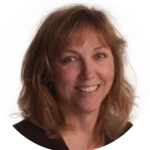Preschool
9 min Read
How three innovative early childhood programs from across the country are making a difference

August 11, 2014
Preschool
9 min Read

August 11, 2014

A child’s brain develops at a rapid fire pace. At birth it is approximately one-quarter of its approximate adult weight and will grow more during the first three years than any other time in their lives. In those first few years it will produce billions of cells and hundreds of trillions of connections, or synapses, between these cells.

“There is more neuron activity in those first six years than we’ll ever have in our entire lives,” says Nicole Letourneau, co-author with Justin Joschko of Scientific Parenting: What Science Reveals about Parental Influence.
Research on early brain development has turned the nature/nurture argument on its head and shown that even kids with a certain genotype that predisposes them to a negative outcome can be turned around with a positive environment. Similarly, good child-care – especially with an engaged teacher – can compensate for risk factors such as poverty, that can influence how well a child does in school.
Nicole, who is also professor in the faculties of Nursing and Medicine in Pediatrics, and Chair of Norlien/Alberta Children’s Hospital Research Institute in Child and Maternal Health at the University of Calgary, defines a quality child care environment as one that both nurtures and stimulates a child while giving them a sense of safety and security.
This requires innovative programming and a high staff-to-child ratio.
“Children need to be exposed to a lot of things and they need to be exposed to them in a way that’s not stressful and that’s underpinned with lots of nurturing,” says Nicole.
ParentsCanada presents three inspiring and innovative examples of early childhood programs from across the country that are making a difference.
Jim Mustard had one of the world’s best educators to teach him about the importance of a child’s early years.
His father was the worldrenowned Dr. Fraser Mustard, a giant in the field of early childhood development whose research led to the opening of more than 100 Ontario Early Years Centres along with other programs for children.
As a child growing up in Dundas, Ont., Jim absorbed his father’s teachings by osmosis since it was around him all the time. As an adult, he accompanied his father to Early Childhood Development (ECD) conferences where he learned how a child’s early experiences can define their life trajectory.
Dr. Mustard died in 2011 at 84 but his dream is living on in his son’s work. Jim, 56, is deputy warden in Inverness, a small town on the west coast of Cape Breton Island.
He and his partner Margaret Thompson were in their twenties when they moved here. Over the years, they have seen Inverness dissolve from a thriving coal mining town to a place that’s lost a sense of community, partly because so many have been forced to move to find work. It’s common for fathers to be gone for extended periods working in the Alberta oilsands.
With no child care and few medical specialists for children, many moms are struggling and there are new pockets of poverty. Some families have moved away permanently.
Jim and others noticed that more children were lagging in school. So four years ago he formed the Inverness Early Years Co-op committee with the goal of opening a centre that would follow his father’s philosophy.
“Isolation is killing us,” says Jim. “I knew we needed to get out of our boxes and get into a centre where we could bump into each and find out what’s going on with our babies. If I’m new to the community I can meet other people and make those relationships solid as I go through my child’s lifetime.”
After much work, the Inverness Early Years Co-op opened its doors this summer inside a large building that overlooks the Gulf of St. Lawrence. Jim wants it to have a “kitchen table feel,” and be a place where moms can hang out with their children.
Over time, it will feature prenatal supports, lactation consultants, child care, parenting programs, an adopt-a-grandparent program, a teen drop-in and scheduled visiting times for medical specialists.
“It looks like a café but it’s so much more,” says Jim.
“When you think of the expertise that will appear in an informal setting, it will trump all the rest of it.”
Cindy O’Neill is executive director of The Inverness Cottage Workshop, which supports intellectually disabled adults and shares space with the co-op.
“The key is the focus on the family,” says Cindy. “If you have a strong family, you’ll have strong kids and that’s what this is all about; helping families.”
It’s a sunny Wednesday morning and two-year-old Ella Cameron is “driving” around in a pink miniature car as her mother Jill Drake looks on.
It’s easy to see why Leap Land is a favourite hangout for Ella with its bikes, cars and slides, not to mention its brightly coloured walls and soft rubberized floor. Sun pours through large windows that provide a clear view of the mountains that surround Revelstoke.
Leap Land is one of the plethora of ECD programs that make up the village of services for children and families that have established Revelstoke as a national leader in how a community can nurture healthy children.
“There’s no place like it,” says Jill, who recently moved back to Revelstoke from Vancouver with her husband and three children, specifically for its ECD programs.
The Revelstoke revolution began 10 years ago when the Early Development Instrument (EDI), which measures kindergarten school readiness, showed 19 percent of its children were lagging behind in certain developmental domains.
That was too high, says Anne Cooper, Superintendent of Education for Revelstoke’s Board of Education (now retired) and a driving force behind the change.
Anne worked closely with early literacy coordinator Tracy Spannier, who is co-ordinator of the ECD Committee, and Linda Chell, executive director of the child care society, to develop an ambitious plan to revitalize services.
In six years they lowered the EDI to just over six percent, making Revelstoke the first community in Canada to achieve such an improvement. Anne cites strong collaboration and open dialogue as keys to their success.
Services are offered from the moment a child is born when a public health nurse delivers a package of information to a new parent.
In the toddler years, there’s a full range of services, including resource libraries, parenting workshops and playgroups. Programs like Strong Start, Mother Goose, and Leap Land draw a steady stream of parents.
“Providing supports to parents is a huge part of what we do,” says Tracy.
Linda adds having the services connected and under one roof has been key. “Once they get connected with one service, they can get others,” says Linda.
Now the ECD system is so strong, says Anne, “If there is a child in town who isn’t doing well, we’ll know him or her by name.” She is proud to be able to say they have changed the face of kindergarten kids in their schools.
“We no longer have kids who are entering school not knowing how to hold a book, or struggling in their social interactions. We absolutely have changed the cohort that enters kindergarten and it’s rippled right through the system.”
Indeed, more than 90 percent of Grade 4 students met or exceeded the provincial standards on the Foundational Skills Assessment tests over the last three years and only four children were rated as having behavioural problems, down from 38 in 2004-05.
Anne says that ripple has gone into the secondary schools where they’ve seen an increase in the graduation rate.
Kim Watts remembers the moment well.
The manager of the Early Learning Centre (ELC) at Ryerson University was watching two of her little charges playing when she noticed they always whispered when they spoke Mandarin.
More than half of the children at the centre speak a different language at home so it was something she and others had seen before. That led to much discussion about the issue of language inclusivity.
In 2006, Roma Chumak-Horbatsch, professor of child language and cognitive development at Ryerson’s School of Early Childhood Study, developed an inclusive classroom practice that encourages children to speak their heritage language and builds stronger ties with families.
Evidence has shown that speaking more than one language helps with brain development, boosts a child’s self esteem and gives children a sense of connection.
The inclusive language practice is now used in child care centres and classrooms across Ontario.
“We didn’t want to be supporting them by only learning a few words and celebrating their holidays. We wanted it to be a full part of the centre,” says Kim.
A few months after the whispering incident during a birthday celebration at the centre, one of the little girls from before suddenly stepped forward and broke into song in Mandarin.
“It was one of those wonderful moments where we saw that what we were doing was helping,” says Kim.
Ryerson’s ELC, celebrating its 50th anniversary this year, has 66 children in its preschool, toddler and kindergarten programs and an array of innovative programming.
They are able to offer that programming because they’re an early learning lab and are connected to the school’s Early Childhood Studies program. The centre has a much higher-than-average staffchild ratio due to visiting research students, student teachers and professors. Everything, says Kim, is done with children’s development in mind.
“We’re a little community within a large community,” says Kim.
Examples of that innovation can be seen outdoors where sandboxes are set into the ground and slides are built into the hillside so they’re accessible to all children.
In the spring, a garden on the centre’s grounds overflows with blueberries, tomatoes, radishes, kale and herbs, which the children helped plant. Families can take what they want from the garden. Last year the children put together a cookbook that was then sold to families. “It’s just a lovely little oasis,” says Kim.
Freelance writer Denise Davy travelled across Canada studying children’s mental health on a journalism fellowship from the Canadian Institutes of Health Research.
Originally published in ParentsCanada magazine, August/September 2014.